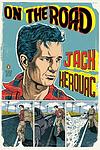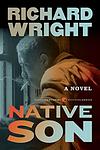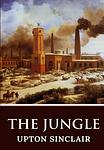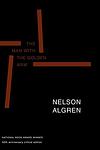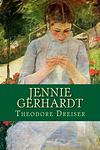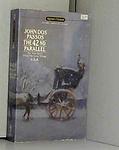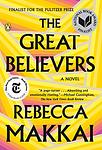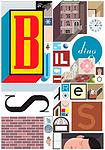The Greatest "Chicago, Social & Cultural Fiction" Books of All Time
Click to learn how this list is calculated.
This list represents a comprehensive and trusted collection of the greatest books. Developed through a specialized algorithm, it brings together 300 'best of' book lists to form a definitive guide to the world's most acclaimed books. For those interested in how these books are chosen, additional details can be found on the rankings page.
Genres
The "Chicago" category of books refers to literature that is set in or inspired by the city of Chicago. These books may explore the city's rich history, diverse culture, and unique architecture, or delve into the lives of its residents and the challenges they face. From gritty crime novels to heartwarming coming-of-age stories, the Chicago genre encompasses a wide range of themes and styles, all united by their connection to this iconic American city.
Social & Cultural Fiction is a literary category that encompasses novels and stories that delve into the complexities of society and culture, exploring themes such as class, race, gender, and identity within specific social contexts. These narratives often provide a lens through which readers can examine the intricacies of human relationships and the impact of cultural norms and societal structures on individuals and communities. By offering a fictional yet reflective portrayal of real-world social dynamics, this genre invites readers to gain a deeper understanding of the diverse experiences that shape our world. Authors in this category frequently use their characters and settings to comment on contemporary issues, challenge prevailing ideologies, and provoke thought about the possibility of social change, making Social & Cultural Fiction a powerful tool for empathy and a mirror for the ever-evolving human condition.
Countries
Date Range
Reading Statistics
Click the button below to see how many of these books you've read!
Download
If you're interested in downloading this list as a CSV file for use in a spreadsheet application, you can easily do so by clicking the button below. Please note that to ensure a manageable file size and faster download, the CSV will include details for only the first 500 books.
Download-
1. On the Road by Jack Kerouac
This novel follows the story of a young man and his friend as they embark on a series of cross-country road trips across America during the late 1940s and early 1950s. The protagonist, driven by a desire for freedom and a quest for identity, encounters a series of eccentric characters and experiences the highs and lows of the Beat Generation. The narrative is a testament to the restlessness of youth and the allure of adventure, underscored by themes of jazz, poetry, and drug use.
-
2. Native Son by Richard Wright
This novel tells the story of Bigger Thomas, a young African-American man living in Chicago's South Side during the 1930s. Bigger's life takes a tragic turn when he accidentally kills a young white woman. The incident leads to his arrest and trial, revealing the deep-seated racial prejudices and injustices prevalent in American society at the time. The narrative explores themes of poverty, systemic racism, fear, and the effects of oppression.
-
3. The Adventures of Augie March by Saul Bellow
"The Adventures of Augie March" is a novel set in Chicago during the Great Depression. The story follows the life of Augie March, a poor but spirited boy growing up in a broken home, as he navigates his way through life. The narrative explores his various jobs, relationships, and adventures, as he constantly seeks his identity and place in the world. His journey is marked by a series of encounters with different people and experiences, each shaping him in unique ways.
-
4. The Jungle by Upton Sinclair
This novel exposes the harsh conditions and exploited lives of immigrants in the United States in Chicago and similar industrialized cities. The protagonist, a young Lithuanian immigrant, works in the meatpacking industry and experiences the extreme poverty, poor working conditions, and lack of social services. The narrative explores the corruption of the American meatpacking industry in the early 20th century and the hardships faced by the working class, leading to significant public outcry that contributed to the passage of the Pure Food and Drug Act.
-
5. Herzog by Saul Bellow
The novel centers around Moses Herzog, a middle-aged, intelligent yet distressed man who is going through a mid-life crisis. After his second marriage fails, he falls into a state of emotional turmoil and begins writing letters to friends, family, and even famous figures, expressing his philosophical thoughts and personal feelings. His journey of self-discovery and understanding forms the crux of the story. It's a profound exploration of a man's struggle with the complexities of life and his quest for meaning.
-
6. U.S.A. Trilogy by John Dos Passos
The U.S.A. Trilogy is a series of three novels that chronicle the lives of various characters in the first half of the 20th century in the United States. The narrative intertwines the stories of twelve characters as they navigate the societal changes and upheavals of the era, including World War I, the Great Depression, and the rise of Hollywood. The author uses a unique narrative technique that combines traditional prose, newspaper-style headlines, biographies, and stream-of-consciousness writing to paint a vivid picture of American life during this period.
-
7. Passing by Nella Larsen
"Passing" is a novel about two light-skinned African-American women, Irene Redfield and Clare Kendry, who can 'pass' as white. Set during the Harlem Renaissance, the story explores the intricacies and challenges of racial identity in 1920s America. Clare, who has chosen to live as a white woman, married to a racist who is unaware of her true heritage, risks everything when she reconnects with her childhood friend Irene, causing both women to grapple with their identities and desires, leading to tragic consequences.
-
8. The House on Mango Street by Sandra Cisneros
The book is a collection of interconnected vignettes that detail the experiences of a Latina girl growing up in the Hispanic quarter of Chicago. It explores her struggles with her identity, her desire for a better life, and her experiences with poverty and gender roles. The protagonist's observations and experiences weave a vivid picture of life in a Latinx community, and her dreams of a better future give the narrative a sense of hope and resilience.
-
9. Maud Martha by Gwendolyn Brooks
The novel is a poignant exploration of the inner life of an African American woman navigating the complexities of identity, beauty, and dignity in 1940s Chicago. Through a series of vignettes, the protagonist reflects on the joys and challenges of her everyday experiences, from the nuances of family dynamics and marriage to the sting of racial prejudice and societal expectations. Her journey is one of self-discovery and resilience, as she seeks to affirm her worth and find contentment amidst the often harsh realities of her world.
-
10. The Man with the Golden Arm by Nelson Algren
"The Man with the Golden Arm" is a novel that tells the story of Frankie Machine, a talented card dealer and drummer in post-World War II Chicago who becomes addicted to morphine. The narrative vividly portrays his descent into addiction and his struggles with poverty and crime, while also exploring themes of despair, corruption, and redemption. The book is notable for its gritty depiction of life in the urban underbelly and its nuanced characterizations.
-
11. Studs Lonigan by James T. Farrell
"Studs Lonigan" is a trilogy that follows the life of an Irish-American man growing up in the South Side of Chicago. His life is marked by aimlessness and self-destruction, as he navigates through adolescence into adulthood against the backdrop of the Great Depression. The protagonist's struggle with his own ambitions, societal pressures, and personal weaknesses provides a stark examination of the human condition and the American Dream.
-
12. Quicksand by Nella Larsen
"Quicksand" is a semi-autobiographical novel about a mixed-race woman named Helga Crane who, feeling out of place in both African-American and white societies, embarks on a journey of self-discovery. From the Southern United States to Denmark and back, she struggles with racial identity, sexual repression, and societal expectations, eventually marrying a reverend and becoming disillusioned with her life as a preacher's wife in the rural South. The novel explores themes of racial identity, class, and gender in the early 20th century.
-
13. The Help by Kathryn Stockett
Set in the early 1960s in Jackson, Mississippi, the story revolves around three main characters: two black maids and a young white woman. The maids, who have spent their lives taking care of white families and raising their children, agree to share their experiences with the young woman, who is an aspiring writer. The book offers a poignant and humorous look at the complex relationships between these women, while also exploring the racial tensions and social changes of the era.
-
14. The Titan by Theodore Dreiser
"The Titan" is a novel that continues the story of a ruthless and ambitious businessman as he expands his empire in the early 20th-century United States. Having conquered the streetcar industry, the protagonist now sets his sights on utilities and finance, using his wealth and power to manipulate stock markets, bribe officials, and crush any opposition. His personal life is equally tumultuous, filled with affairs and scandals that threaten his marriage and social standing. This narrative serves as a critique of the American Dream and the capitalist fervor of the time, exploring themes of greed, corruption, and the quest for power at the expense of ethics and human relationships.
-
15. Dangling Man by Saul Bellow
Set in Chicago during World War II, the novel follows the life of a young man waiting to be drafted into the army. As he waits, he grapples with his feelings of isolation, frustration, and anxiety, which are exacerbated by his joblessness and the uncertainty of his future. His diary entries reveal his philosophical reflections on life, his struggles in his relationships, and his increasing mental instability as he feels more and more trapped by his circumstances.
-
16. Jennie Gerhardt by Theodore Dreiser
This novel tells the poignant story of Jennie Gerhardt, a young woman of humble origins who, through a series of unfortunate circumstances and societal pressures, becomes involved with two different men of higher social standing throughout her life. Set against the backdrop of late 19th-century America, the narrative explores themes of love, class disparity, and the struggle for personal dignity. Jennie's character embodies resilience and moral complexity as she navigates the challenges posed by her relationships and the harsh judgments of society, ultimately highlighting the human capacity for endurance and the quest for happiness amidst societal constraints.
-
17. A Street In Bronzeville by Gwendolyn Brooks
This book is a poignant collection of poetry that explores the lives and struggles of African Americans in the mid-20th century urban landscape. Through vivid imagery and emotional depth, the poems delve into themes of racial identity, social injustice, and the search for personal meaning within the confines of a segregated society. The poet's keen observations and lyrical mastery bring to life the vibrant community of Bronzeville, a neighborhood in Chicago, capturing both its beauty and its hardships, and offering a powerful commentary on the broader African American experience during this era.
-
18. Eight Men: Short Stories by Richard Wright
"Eight Men: Short Stories" is a collection of tales that explore the lives of African-American men in a racially divided America. Each story delves into the experiences of these men as they navigate through the complexities of their existence, facing racial prejudice, social injustice, and personal dilemmas. The stories are a poignant portrayal of their struggles and resilience, offering a profound commentary on race relations and the human condition.
-
19. The 42nd Parallel by John Dos Passos
"The 42nd Parallel" is a novel that explores the lives of several characters in the early 20th century United States. The narrative intertwines the stories of five protagonists as they navigate through various historical events and social changes such as labor strikes, World War I, and the Mexican Revolution. The book is notable for its experimental style, which includes the use of "Newsreel" and "Camera Eye" sections that incorporate newspaper clippings, song lyrics, and stream-of-consciousness writing to reflect the chaotic and rapidly changing times.
-
20. The Great Believers by Rebecca Makkai
"The Great Believers" by Rebecca Makkai is a powerful novel that tells the story of two interconnected groups of people: a group of gay men in 1980s Chicago during the height of the AIDS epidemic, and a woman in 2015 who is searching for her estranged daughter in Paris. The novel explores themes of love, loss, friendship, and the devastating impact of the AIDS crisis. Makkai's writing is both heartbreaking and hopeful, and she skillfully weaves together the two timelines to create a poignant and unforgettable story.
-
21. Nowhere Man by Aleksandar Hemon
"Nowhere Man" is a unique narrative that explores the life of a Bosnian immigrant who is trapped in Chicago during the outbreak of the Bosnian war. The novel uses a non-linear narrative structure and multiple perspectives to tell the story of the protagonist's life, from his childhood in Sarajevo, to his struggles and experiences in America. The book is a poignant examination of identity, displacement, and the immigrant experience.
-
22. Building Stories by Chris Ware
"Building Stories" is a unique graphic novel that explores the lives of the residents of a three-story Chicago apartment building, including a lonely single woman, a couple embroiled in a failing marriage, and the building's elderly landlady. The narrative is presented in a box containing 14 different printed works including books, newspapers, and pamphlets, each offering a different perspective on the characters' lives, struggles, and dreams. The innovative format allows readers to choose their own path through the interwoven stories, resulting in a deeply immersive and interactive reading experience.
-
23. Nineteen Nineteen by John Dos Passos
"Nineteen Nineteen" is the second novel in a trilogy that explores the social and political changes in the United States during the early 20th century. It uses a unique narrative style that blends traditional storytelling with newspaper clippings, song lyrics, and biographies of historical figures. The book focuses on the year 1919, a time of significant upheaval in America and abroad, and follows a diverse group of characters as they navigate these tumultuous times.
-
24. Caramelo by Sandra Cisneros
This novel is a rich tapestry of family history and Mexican and American cultures, told through the eyes of a young girl, Lala Reyes, during her annual road trips to Mexico City. The narrative weaves through generations, focusing on the complexities of family dynamics, identity, and the search for one's place within two cultures. Central to the story is the symbolic caramelo rebozo, a striped shawl inherited from Lala's grandmother, which serves as a metaphor for the blending of traditions, histories, and the colorful stories that make up Lala's heritage. Through vivid storytelling, the book explores themes of memory, storytelling, and the immigrant experience, offering a poignant look at the bonds that tie families together across borders and generations.
-
25. The Lazarus Project by Aleksandar Hemon
The novel follows two intertwined narratives. In the first, set in 1908, a Jewish immigrant is wrongfully accused of anarchism and murdered by the Chicago Chief of Police. In the second, set in modern times, a writer from Eastern Europe is investigating the century-old murder, leading him on a journey across Eastern Europe and eventually back to the United States. The narratives explore themes of love, immigration, and the pursuit of the American dream.
Reading Statistics
Click the button below to see how many of these books you've read!
Download
If you're interested in downloading this list as a CSV file for use in a spreadsheet application, you can easily do so by clicking the button below. Please note that to ensure a manageable file size and faster download, the CSV will include details for only the first 500 books.
Download